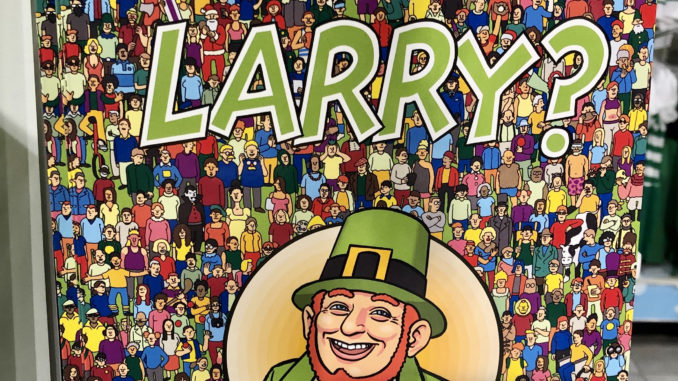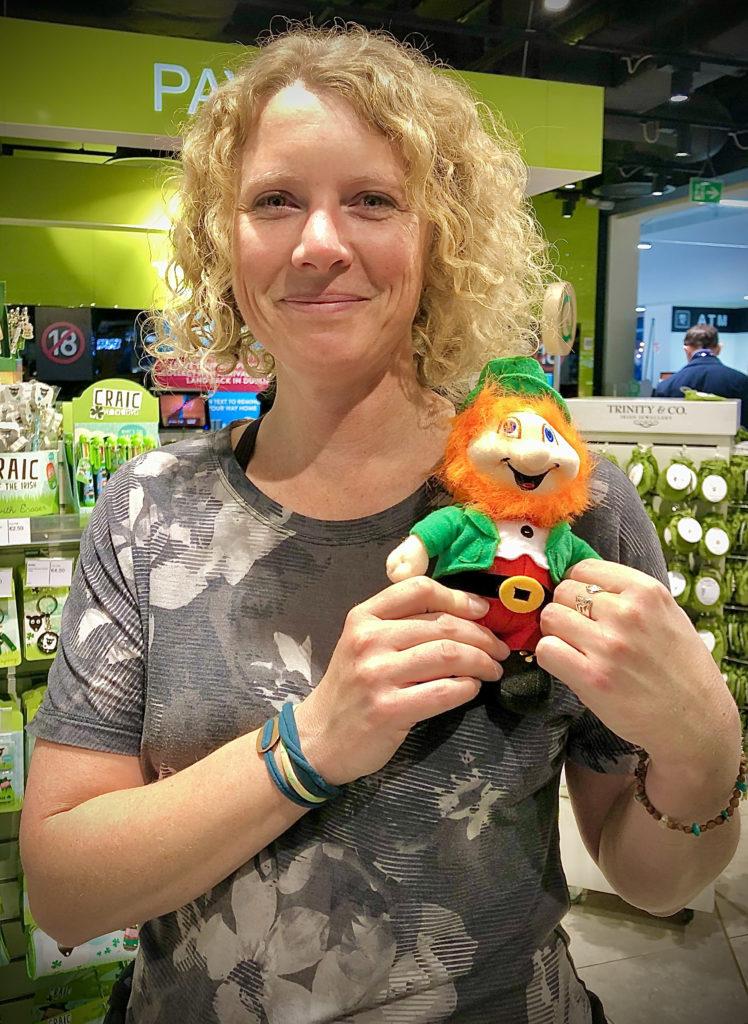
By Annie Lindgren
When I set off for a week in Ireland, this past November, my son left me with a list of items I was instructed to ‘take a selfie’ with. One being a ‘leprechaun.’ I assumed this would be an easy find in the country this Irish icon originated from, but I was surprised not to see a single leprechaun (plenty of gnomes and fairies) until I was back at the airport at the end of the trip. What happened to all the leprechauns in Ireland?
I did some research. Leprechauns have been around for a very long time, among the earliest settlers of Ireland. The description of them and their characteristics changed over time (they used to wear red, used to have female versions, and there were trouble-making cousins with drinking problems), there was a shift in the 1800s to the leprechaun we are more familiar with today. A small, older, bearded, red-haired male, handsomely dressed in a green suit with a buckled hat and shoes. Leprechauns are fairies, possessing magical powers, and inhabiting tiny houses or living in hills. They have a reputation for being mischievous loners, who are shoemakers by trade, stowing away all their earnings in their pot of gold.
If you catch a leprechaun, they will often barter their freedom in exchange for their pot of gold, but be careful because they will trick you in the process of showing you where the gold is. They also may have trick coins, that turn to ash or return to the sender, once they exchange hands. You could instead hold him hostage until he grants you three wishes, but you also have to be careful of what you wish for because you are likely to be tricked there too. Many Irish folklore stories teach lessons about stealing, the downsides of getting rich quick, and that you really should leave the leprechauns alone. It is said that you can find the leprechaun’s pot of gold at the end of a rainbow, and you can tell a leprechaun is near, by listening for the tiny ‘tap-tap-tapping’ of a shoemaker’s hammer.
There have been movies made about leprechauns that negatively depict them, and they have a bad image for being drunkards. Not all in Ireland are fond of this image, explaining why the streets of Ireland are not filled with leprechauns, outside of maybe St. Patrick’s Day. I was visiting Ireland in November, before Thanksgiving, and was surprised to find the streets lined with Christmas decorations. The Irish do love decorating for holidays.
I realized I didn’t know much about St. Patrick’s Day, other than my experiences that it was the holiday involving wearing green, watching a parade, drinking, and celebrating being Irish. More research revealed that St. Patrick’s Day has been a religious holiday in Ireland for more than 1000 years, as the annual remembrance of Saint Patrick, the patron saint of Ireland, who is believed to have died on March 17th, 461. The Irish attend church in the morning and celebrate with feasts in the afternoon. The St. Patrick’s day symbol in Ireland is the three-leaved Irish clover, which represents the Holy Trinity. Until the 1970s, the pubs were not even allowed to be open on this holiday.
The first St. Patrick’s day parade occurred in America when Irish soldiers marched through New York City on March 17th, 1762. The parade, and the Irish music that accompanied it, helped the Irish soldiers serving in the English army connect with their roots, as they were far from home. This tradition continued, and now many cities throughout America have parades for St. Patrick’s day, with the original New York one remaining the oldest and largest St. Patrick’s Day parade in the world. Ireland suffered big time during the mid-1800s with the potato famine, which led to many Irish people, who were also predominantly poor (as people with money in Ireland could afford to eat food other than potatoes), immigrating to America. Many had trouble getting jobs, and faced hardships, leading to discrimination and a joining of efforts in fighting for rights and equality, adding another layer of meaning to the annual St. Patrick’s Day parade celebration.

According to Irish folklore, the color green is invisible to Leprechauns. The Irish countryside is a patchwork of many shades of green, which is also the color of the nation’s flag. Wearing green on St. Patrick’s day represents Ireland, as well as making it easier to avoid being pinched by mischievous leprechauns. The parades, leprechauns, various rituals of turning things green (like beer and rivers), and the drinking to celebrate, are all a part of America’s version of this holiday. There are St. Patrick’s day festivals and parades in Ireland, after a 1995 nationwide decision to attract more tourism, and desire for sharing Ireland and its culture with the rest of the world.
An interesting part of traveling to another country is getting to see the differences in cultures, and the meanings of symbols and holidays that often change when they cross-cultural or national lines. It opens doors to seeing things from a different point of view. It seems my loss of the leprechaun had more to do with a misunderstanding about what leprechauns represent in Ireland, based on my Americanized view of what St. Patrick’s day was all about.
Back at the airport, at the end of my trip, I found a ‘Where’s Larry’ book and accompany stuffed ‘Larry the Leprechaun’ in a gift shop. Ireland’s version of ‘Where’s Waldo’. I snagged a selfie.
On this Saint Patrick’s day, keep an eye out for Leprechauns, and don’t forget to wear your green. If you happen to catch a real leprechaun, ask it a question for me: “What happened to all the leprechauns in Ireland?” I am planning a return trip to Ireland for a closer look.
Support Northern Colorado Journalism
Show your support for North Forty News by helping us produce more content. It's a kind and simple gesture that will help us continue to bring more content to you.
BONUS - Donors get a link in their receipt to sign up for our once-per-week instant text messaging alert. Get your e-copy of North Forty News the moment it is released!
Click to Donate
